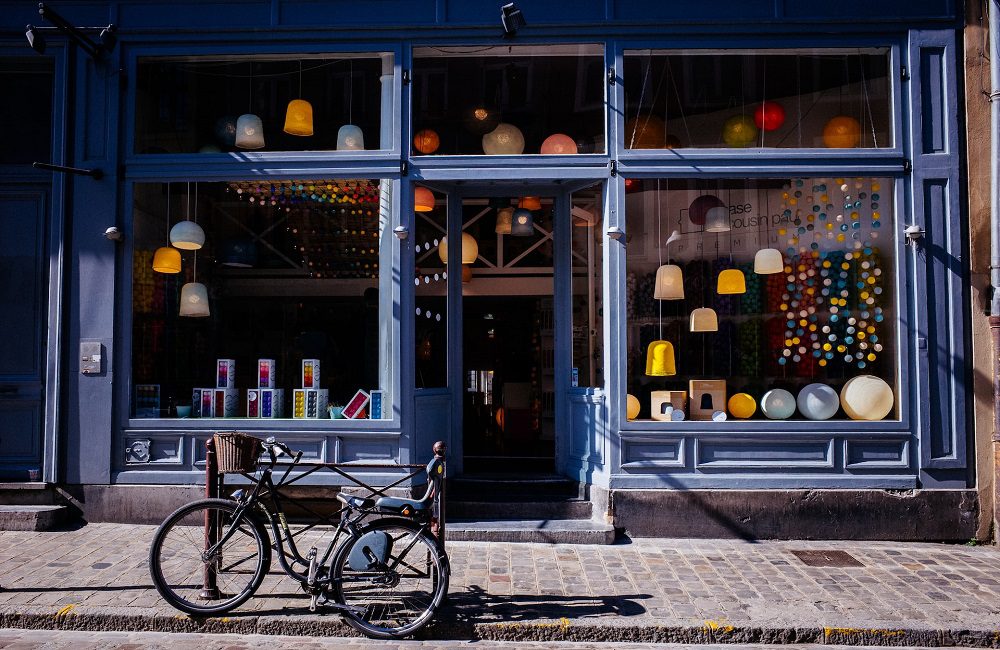Are you ready to launch your retail business? You’ve secured the loan, you’ve got the business plan, you’re ready to roll, and now you just need a physical presence. There is a lot to think about when you are finding your first storefront for your small business. Take a look at our tips to be sure you land in the right place.
Location
Much like buying or renting your own home, finding your first storefront is all about location, location, location. The first choice is between city and rural, which might be an easy decision depending on what you’re selling and what your business plan is.
If you’re thinking about the city, deciding where to put it becomes a little more complicated than just the high street of a small town. Now you have many streets to choose from. Investigate factors like the size of the city’s trading area, total retail trade potential for different lines of trade, the state of the competition, and population trends.
You’ll want to make sure your location is prominent but also a place that will make money, so wander around the neighborhood and look into the shops around you when hunting.
You might want to also think about crime in the area. If it’s a prominent space, your property might be susceptible to burglary and damage. You can protect your store and your items with corporate insurance. Check out the types of corporate insurance and consider things such as the cost and see what suits your current circumstances.
Space
A big part of choosing a storefront is using the space you have well. You have to think about the layout that not only suits what you are selling and what the experience you are going for is, but also what you are aiming to lead your customers to and how you are going to lead them there.
A straight floor plan is the most common for high street stores, as it’s good for setting everything on the floor in an organized fashion. People are here to find something and it’s more akin to a task. More luxury stores tend to go with a loop floor plan that sends the customer casually browsing in a loop around your store. These floor plans tend to have all the items on the walls and offer an air of exclusivity to them. Think suits or jewelry stores. You feel like you have to ask permission to touch anything. And then there are free flow floor plans that are a mix of the two.
There is some debate on whether you should lead your customers in a clockwise or counter-clockwise direction, however the important part is what you’re leading them to. The theory goes that people walk in the same formation that they drive in, so US stores would be better putting more high value items on the right as that’s the side of the road they drive on, whereas UK customers are likely to wander to the left. Either way, it’s important to put your high value items somewhere it will catch their eye. Examples are shown at the center of the loop floor plan, or on a stand at the end of a section’s leading path.
Aesthetic
Once you have your space, it’s time to think about how you present yourself. Whether it’s a good or bad thing to you, it’s a fact of life that a part of the shopping experience nowadays is to go somewhere ‘Instagramable’. If buyers only need to go online to buy what they want, they need an extra incentive to enter your store. The plus of this is that it plays into your marketing. User-generated content is the online equivalent of word of mouth, and no marketing tool is more powerful than word of mouth. So, it stands to reason that your storefront has an interesting or distinct aesthetic, shoppers take a photo of it, post it on social media, more shoppers get interested and show up.
There are a lot of ways to do this, but the best is to go all in with a style. Too many stores are forgotten because their white walls and speckled floors look like any other high street store. As long as you inject some luxury you can go with old-timey glamor with rich wood and leather, or pink walls and neon signs, or pastels for a calmer environment, or a wall coated in graffiti for selling streetwear for example. If it’s eye-catching and says ‘expensive’, it should get attention.
Marketing
Speaking of getting attention, you might want to set up your website in conjunction with your store. If you have the ability to set up an online store for the sake of eCommerce, you should do it, but it’s also important to create an online presence for the sake of marketing. An online presence will make sure that people can find you, whether that’s your other online accounts or physically on the street.
Not only is an online presence good for marketing, where fans can see your latest updates, drops and sales, but you can make your customers’ time with you a lot easier. A lot of features on websites can allow for appointments, reservations, customer support and more.

